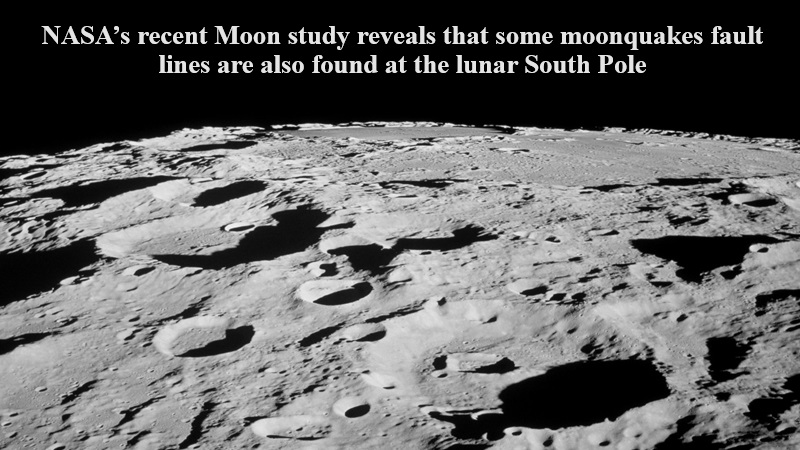
NASA’s recent examination of the Moon’s South Pole has brought to light the presence of moonquakes and fault lines, particularly in the vicinity of the landing site for the upcoming Artemis 3 mission. The study, published in the Planetary Science Journal on January 25, emphasizes the importance of identifying these fault lines for planning the Artemis mission, scheduled for launch in 2026.
Tom Watters from the Smithsonian Institution in Washington, the lead author of the research paper, revealed, “Our modelling suggests that shallow moonquakes capable of producing strong ground shaking in the South Polar Region are possible from slip events on existing faults or the formation of new thrust faults.” The exploration indicates that these regions of moonquakes and faults are situated both near and within the designated landing areas for the Artemis 3 mission.
The identification of thousands of small and youthful thrust faults near the South Pole was made possible by the Lunar Reconnaissance Orbiter Camera aboard NASA’s Lunar Reconnaissance Orbiter (LRO). These faults, formed through ongoing global contraction, are associated with seismic activity, manifesting as shallow-depth moonquakes. The Apollo Passive Seismic Network, consisting of seismometers in the south-polar region, recorded similar shallow moonquakes, providing additional data to support the findings.
Understanding the distribution and potential activity of these thrust faults is crucial for planning the location and stability of permanent outposts on the Moon. This information is vital for the Artemis 3 mission, as it aids in selecting appropriate landing sites for the crewed spacecraft, ensuring the safety and success of the mission to the lunar South Pole.

Post Your Comments